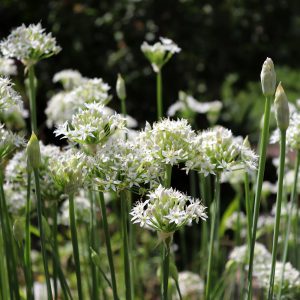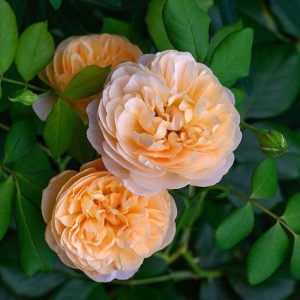Description
Prunus domestica ‘Victoria’ Patio is a cultivar of the Prunus domestica ‘Victoria’, a cultivar of the Prunus domestica, a species of deciduous tree in the Rosaceae family. The cultivar ‘Victoria’ is known for its high-quality fruit and its compact habit, making it a popular choice for small gardens and backyards. The “patio” version is a dwarf form of the tree and is specifically grown for its small size, making it suitable for growing in containers or small gardens. It typically reaches a height of 1-1.5 meters and width of 1-1.5 meters at maturity. It prefers well-drained soils and full sun to partial shade. The tree is hardy and can tolerate cold temperatures. ‘Victoria’ plums are known for their large, round, dark purple fruit with a sweet, juicy, and flavorful flesh. The tree is self-fertile, which means it does not require a companion tree to produce fruit. They are commonly eaten fresh, but also used in jams, jellies, preserves, and in baking.
Key Facts
- Common Name(s):Victoria Plum Tree
- Hardiness:Fully hardy through most of the UK
- How big will I get? Prunus domestica ‘Victoria’ can grow to a height of and a spread of.
- Did You Know That:Victoria’ plums are freestone which means that the pit can be easily removed from the flesh?
Plant Calendar
A rough guide to how this plant will change through the year.
| Jan | Feb | Mar | Apr | May | June | July | Aug | Sept | Oct | Nov | Dec | |
| Flowering Time | 
| 
| ||||||||||
| Foliage Colour |  |
 |
 |
 |
 |
 |
 |
 |
 |
| J | F | M | A | M | J | J | A | S | O | N | D |

| 
| ||||||||||
 |
 |
 |
 |
 |
 |
 |
 |
 |
Care Guide

Soil Requirements
Prunus domestica ‘Victoria’ is a versatile plant and can cope with wet or drier soils, but prefers there to be decent drainage. This plant prefers a neutral pH in soil and may not thrive in acidic or alkaline soil conditions.

Best Position
Prunus domestica ‘Victoria’ prefers a sheltered position and requires full sun to thrive, this consists of more than six hours of direct sunshine per day.

Maintenance
Prunus domestica ‘Victoria’ should be pruned in late winter or early spring before new growth appears. Start by removing any dead, diseased, or damaged wood by cutting it back to healthy wood. This helps to promote healthy growth and prevent the spread of disease. Next, prune out any old or woody stems that may be crowding the center of the tree, as this will encourage new growth and a more compact shape. Additionally, it is important to consider the size and shape of the tree when pruning and to selectively remove branches to maintain the desired shape and promote a strong structure. Be sure to also remove any water sprouts or suckers, which are shoots that come from the base of the tree or from the rootstock. These shoots will not produce fruit and will take energy from the tree.

Pest, Diseases and Wildlife
Prunus domestica ‘Victoria’ can have problems with aphids, caterpillars, it can be vulnerable to certain diseases such as silver leaf. It is also known to attract bees, butterflies, birds and other pollinators. It is toxic to cats, dogs and horses.





